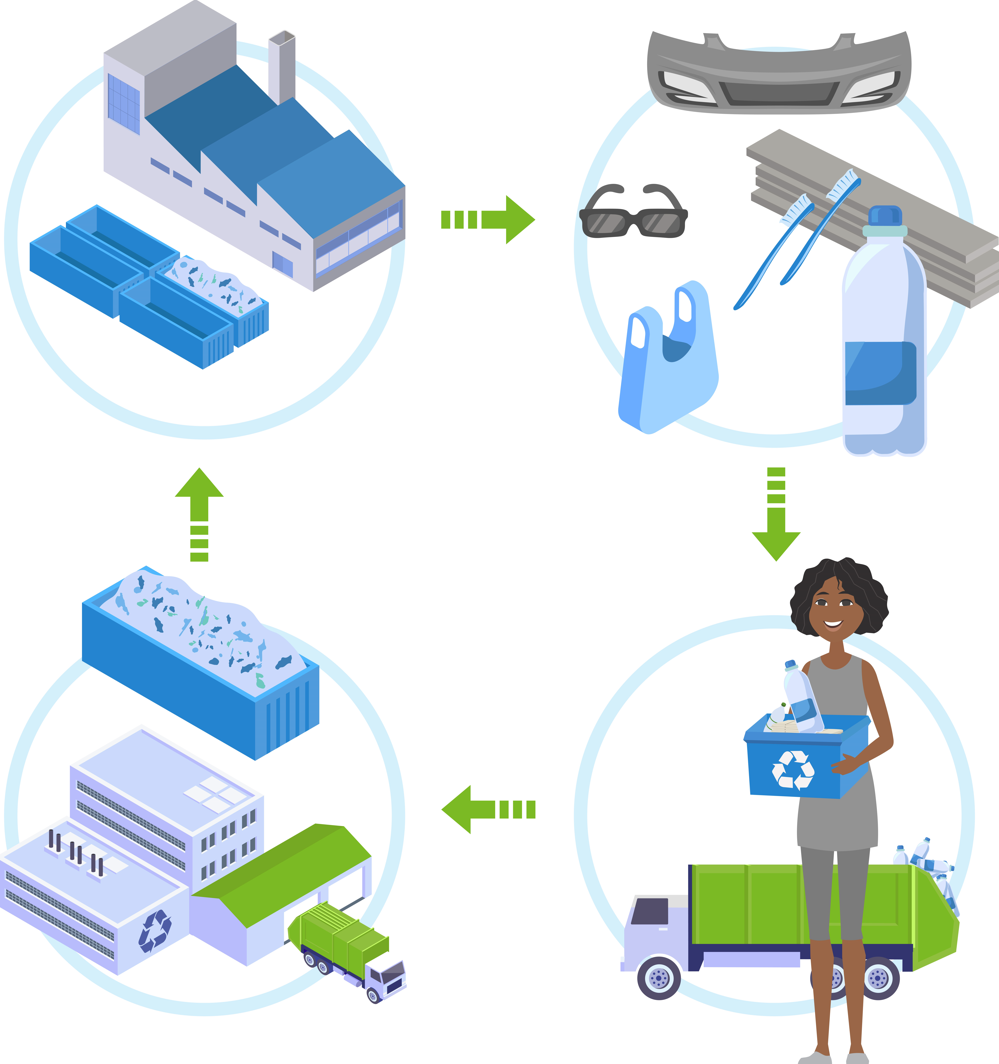
Learn about recycling in Ontario
Recycling in Ontario is going through a big shift to hold businesses that sell products and packaging into the province financially responsible and accountable for their products and packaging when consumers are finished with them. The goal is to increase recycling, reintegrate more valuable resources back into the manufacturing process, reduce waste going to landfill, and use less raw materials. This shift includes making businesses fully responsible for the cost and operations of recycling programs, setting targets for recycling, establishing recycling programs for a wider variety of materials, and establishing a regulatory authority (known as the Resource Productivity and Recovery Authority or RPRA) to make sure businesses fulfill their new recycling responsibilities.
As consumers, we can do our part to reduce waste going to landfill by recycling products and packaging that we use in our everyday lives, like plastic water bottles, cell phones and paint cans, when we are finished using them.
This page provides information on what can be recycled and where, how materials are recycled, common recycling myths and more.
Find a recycling location near you
What can be recycled
Learn what can be recycled by clicking the heading below.
Residential recycling by the numbers
The following charts are based on data from municipalities that participated in the municipal-run Blue Box Program from 2002-2021. Learn more about the history of recycling in Ontario from 2002 – 2021.
- By 2021, 5,418,889 households and 14,361,054 Ontarians were served under the Blue Box Program, representing 96.4% of Ontario’s population.
- From 2002-2021, 17,658,003 tonnes of Blue Box materials were sorted and processed then sold as raw materials for use in place of new materials.
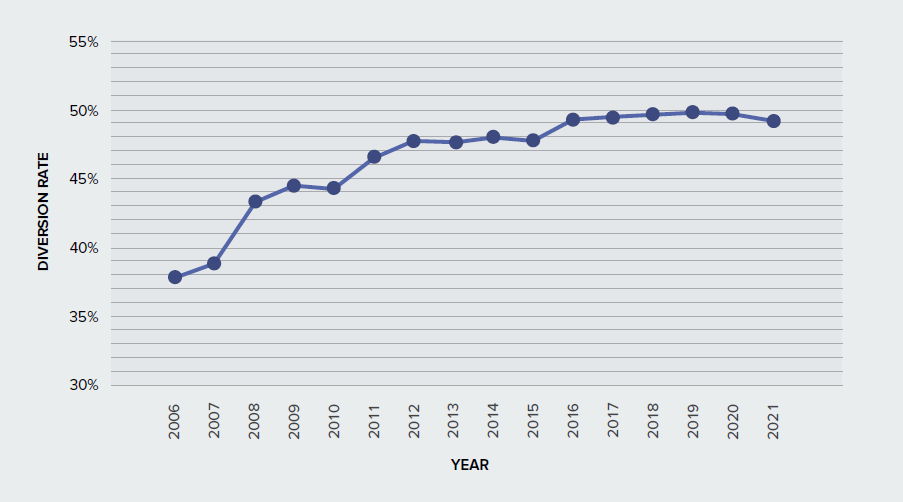
Ontario’s residential waste diversion rate
This rate is a calculation of the proportion of household waste in Ontario that was diverted from landfill from 2006-2021.
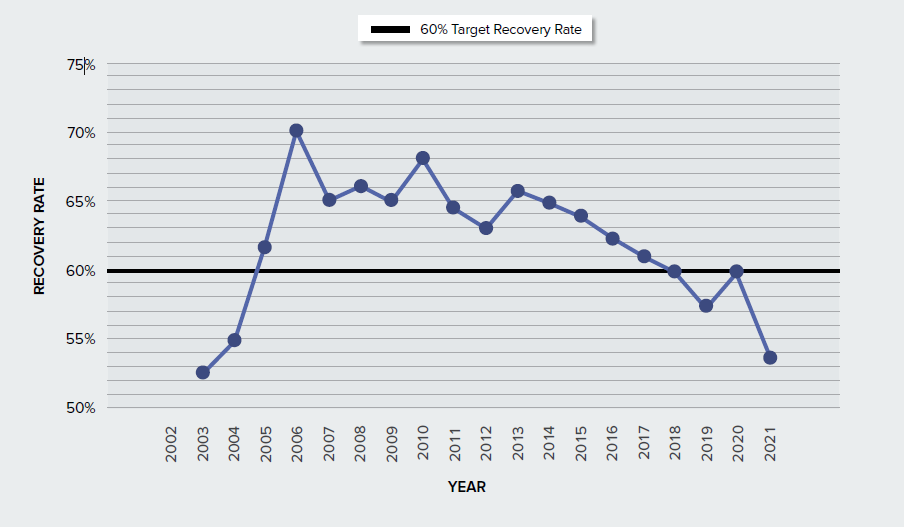
Blue Box recovery rate
This rate is the proportion of Blue Box materials supplied in Ontario that was diverted from landfill from 2002-2021.
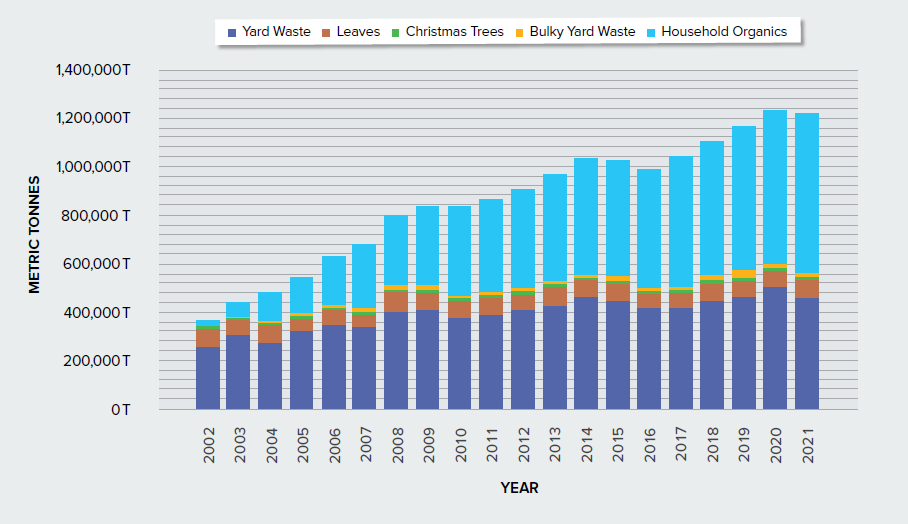
Organics waste collected by material category
This is the volume, in tonnes, of household organic waste and other household yard waste (such as leaves) collected annually in Ontario from 2002-2021.
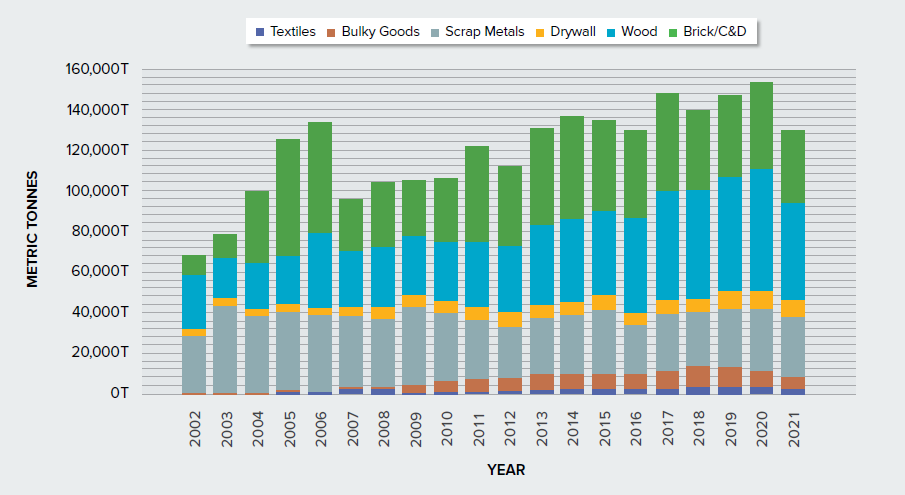
Other recyclables collected by material category
This is the volume, in tonnes, of other non-Blue Box recyclable material collected annually in Ontario from 2002-2021.
How materials are recycled
Finding new ways to reduce our use of raw materials and minimize the waste that gets landfilled is part of what is called the circular economy – where products and packaging are designed to minimize waste and then be collected from consumers, processed back into raw materials and reintegrated into manufacturing new products and packaging.
This video is produced by the Ellen MacArthur Foundation and explains the concept of the circular economy. It does not represent the recycling programs on this webpage but rather, serves as an explanatory video for consumers.
Understanding recycling myths in Ontario
Misconceptions about recycling can hinder consumers’ efforts to keep waste out of landfill and protect the environment. The following are common recycling myths in Ontario that we have addressed to help consumers recycle more effectively.
